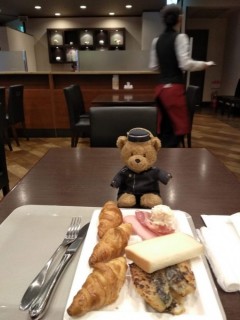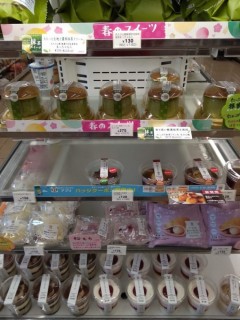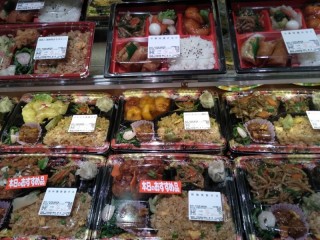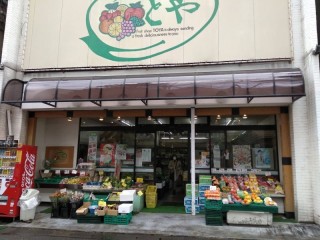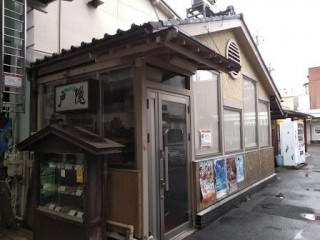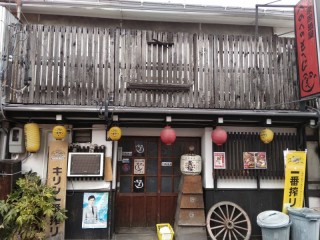Loading
Search
▼ Eating Economically In Japan
- Category:Gourmet
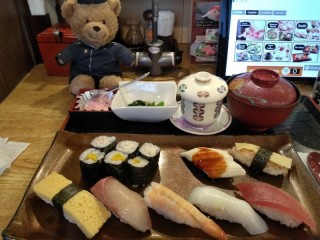
JAPAN TRAVEL
And enjoying it, too!
I save on food. I don’t eat. Just kidding. What, me starve? No, the economics of eating in Japan isn’t about starving or sacrifice and suffering. All you need is a little adaptability, a fresh new approach to eating, because it may not be what you're used to, or want. By economical eating, I mean getting value for money, and eating good, cheap food. Here are some guidelines based from my travels around Japan.
Breakfast at your budget hotel
Budget hotels usually provide a complimentary buffet breakfast. If not, the charge is reasonable. ¥800 is the most I’ve paid. Coffee in Japan is expensive, could be ¥500, and one cup only. So at breakfast, drink up!
And eat up! Save on lunch. Even if your breakfast is normally light, now is the time to remember the old adage: Breakfast like a king, lunch like a duke, dinner like a pauper. Pack your nigiri or rice ball sometimes thoughtfully provided, or make a sandwich. Nothing to be shy or furtive about. Don’t of course overdo it and take ten.
The convenience store aka konbini
There’s one around every corner. You can pick up just about anything, cheaply, from salads, food to go like spaghetti (even carbonara), chicken curry and rice, pork cutlet, bento sets and sandwiches. And booze. And desserts. They will heat food up for you. Your budget hotel will also usually have a microwave.
The convenience store aka konbini
There’s one around every corner. You can pick up just about anything, cheaply, from salads, food to go like spaghetti (even carbonara), chicken curry and rice, pork cutlet, bento sets and sandwiches. And booze. And desserts. They will heat food up for you. Your budget hotel will also usually have a microwave.
Make your own breakfasts if there's no complimentary one. Freshly made coffee can be bought at the konbini for about ¥100 for a regular size, and ¥150 or ¥200 for a large. Milk and sugar provided. Or buy drip café, and make your own breakfast in your room. Budget hotels provide a kettle and fridge.
Supermarkets
Always one near or at the train station. I have noticed the cooked food starts being increasingly discounted after about four pm. They have anyway everything cheaper than at restaurants. They also have small portions, and even a sit down area.
Bakeries
There is always a bakery at big stations, or around town. The freshly made sandwiches stuffed with a variety of filling make for a complete meal. Some serve soups with bread and salad.
There is always a bakery at big stations, or around town. The freshly made sandwiches stuffed with a variety of filling make for a complete meal. Some serve soups with bread and salad.
Some random tips
It might be useful to note what is available around town. A walk through the small streets usually around the train station always pays. Here, too, will be the family run grocers, fruit shops, and restaurants, where things are much cheaper.
I find the best cheap food in these small alleys and streets. They are basic, with no frills but offer hearty food. Just a place to sit, the chef, and the food. People eat and watch the TV and chat. The chef joins in. These small eateries have a very homey feel. I paid ¥950 for a sushi set in one of these places. It could have cost well over ¥2000 for a similar meal elsewhere.
It might be useful to note what is available around town. A walk through the small streets usually around the train station always pays. Here, too, will be the family run grocers, fruit shops, and restaurants, where things are much cheaper.
I find the best cheap food in these small alleys and streets. They are basic, with no frills but offer hearty food. Just a place to sit, the chef, and the food. People eat and watch the TV and chat. The chef joins in. These small eateries have a very homey feel. I paid ¥950 for a sushi set in one of these places. It could have cost well over ¥2000 for a similar meal elsewhere.
Look out for old fashioned western type family diners. Some offer sets which come with pasta, potatoes, rice, soup, salad, all for just ¥1,100!
Avoid any place with a French name, like patisserie, brasserie, le bistro, le gastronomique, and so on. It means expensive.
Don’t wait till you are starving and pooped to find a place to eat. So, you’re almost faint with hunger, charge in somewhere, anywhere, and find its ¥3,000 for their higawari teishogu, or daily special. I didn’t wait to find out what the non-special cost was.
My rough daily budget for food at the places suggested above could be about ¥1,500 to ¥2,000. My photographs will show some examples of the places, and what they look like, to help you spot them.
I’ve never had a bad meal in all my trips in Japan. Bon appetit!
By Arlene Bastion
My rough daily budget for food at the places suggested above could be about ¥1,500 to ¥2,000. My photographs will show some examples of the places, and what they look like, to help you spot them.
I’ve never had a bad meal in all my trips in Japan. Bon appetit!
By Arlene Bastion
- June 1, 2019
- Comment (0)
- Trackback(0)


